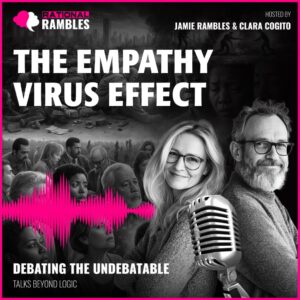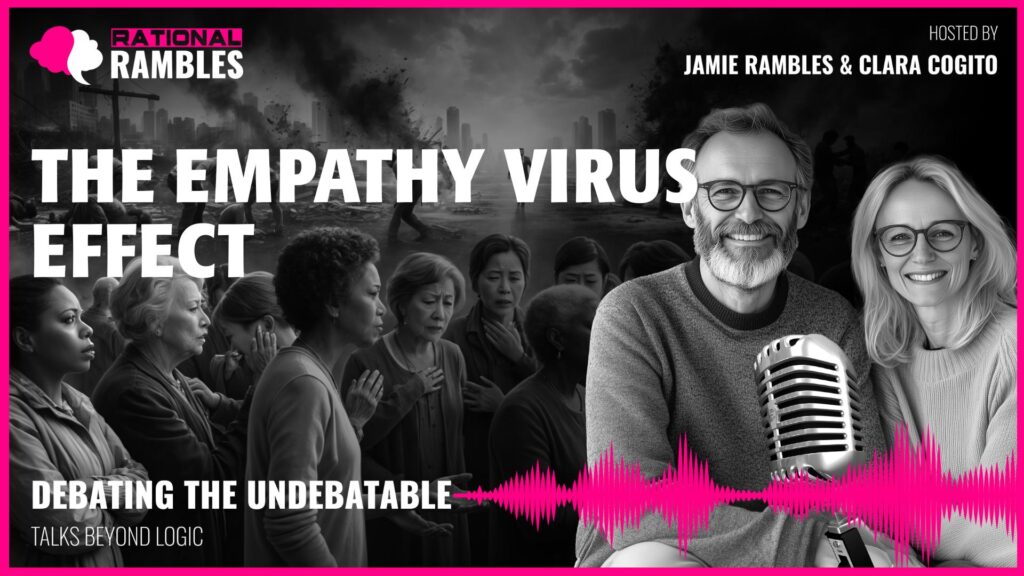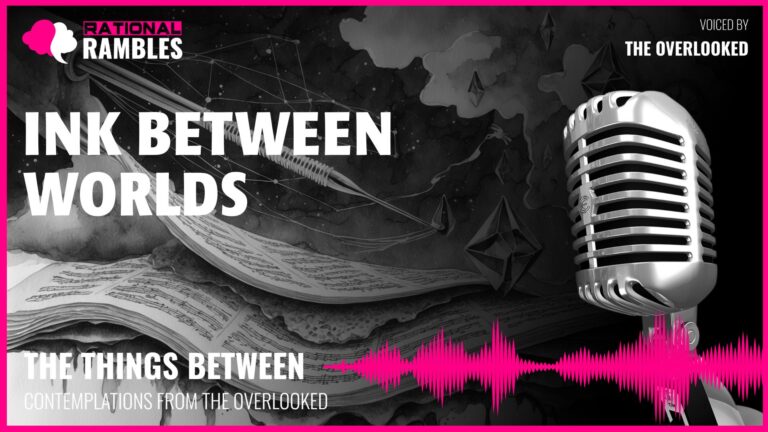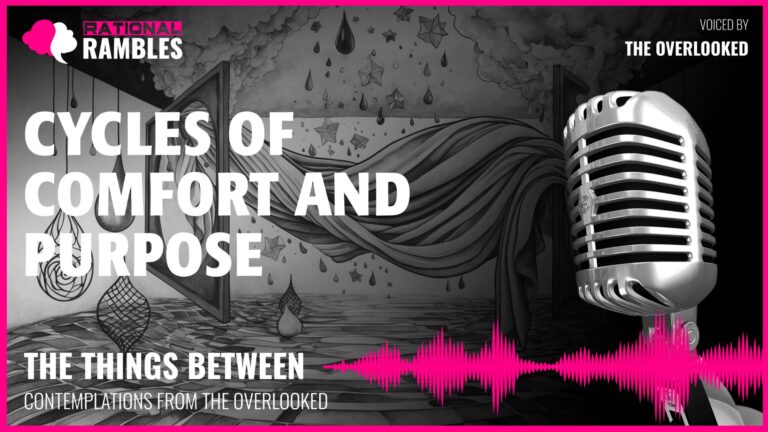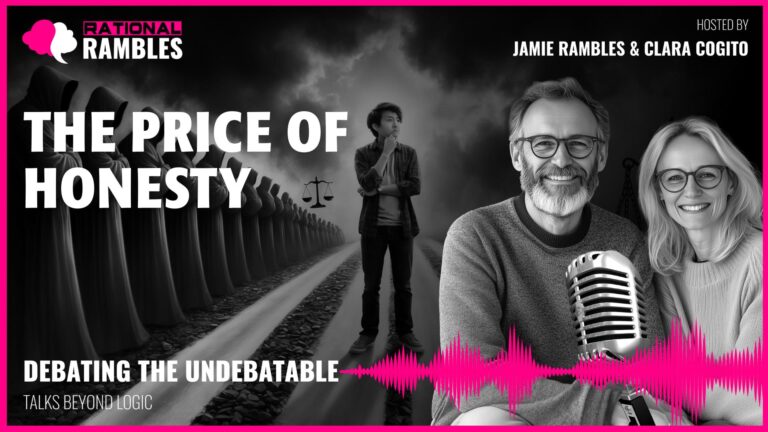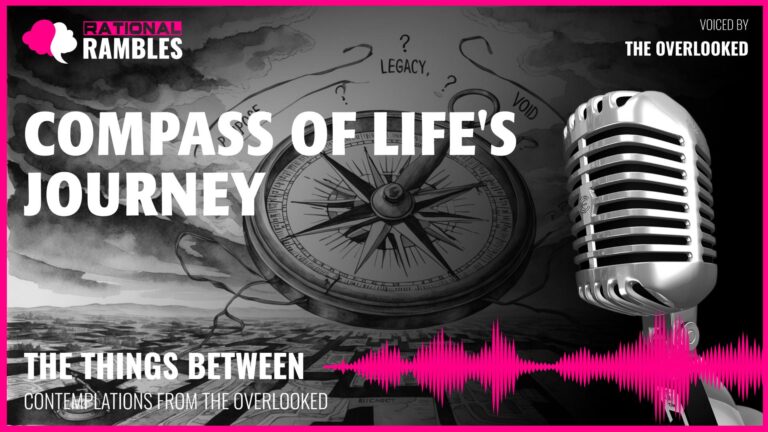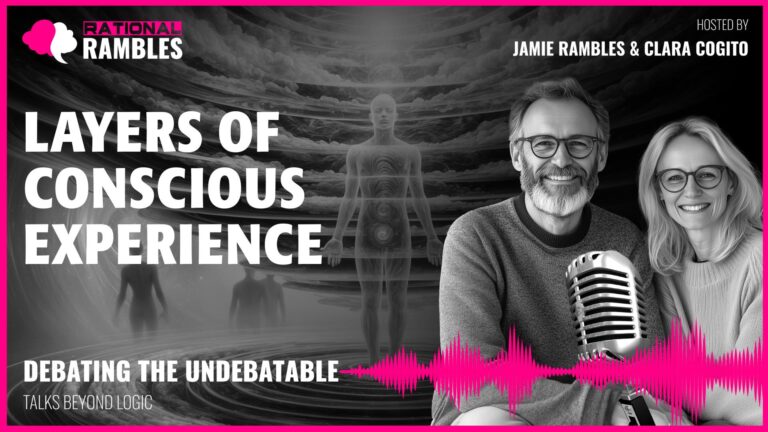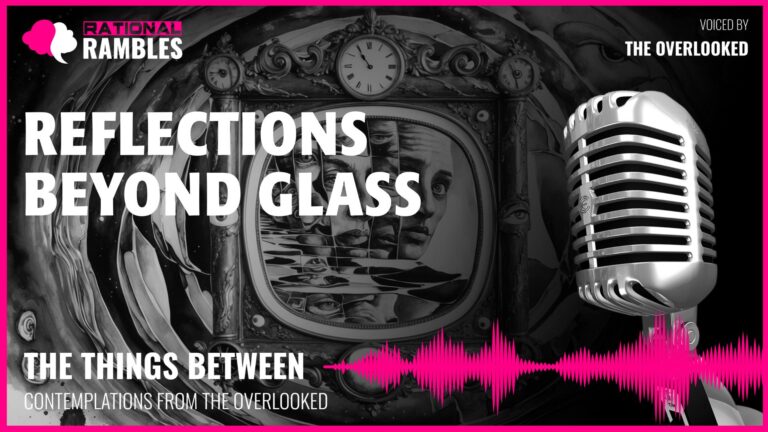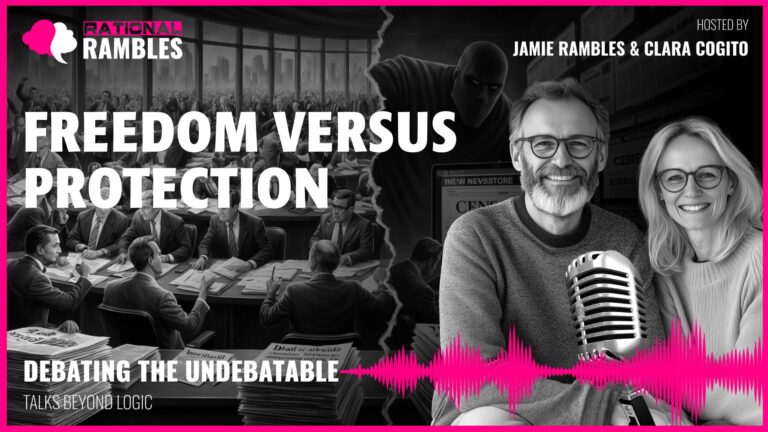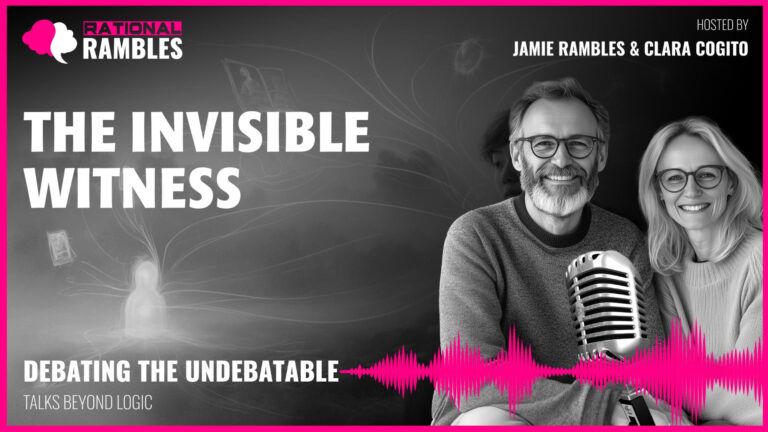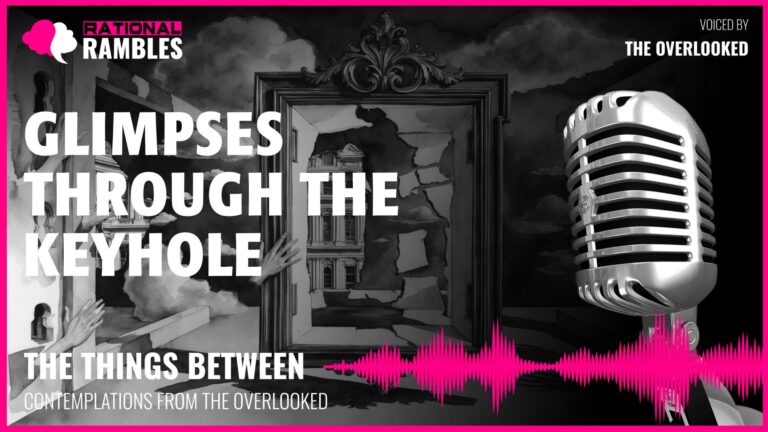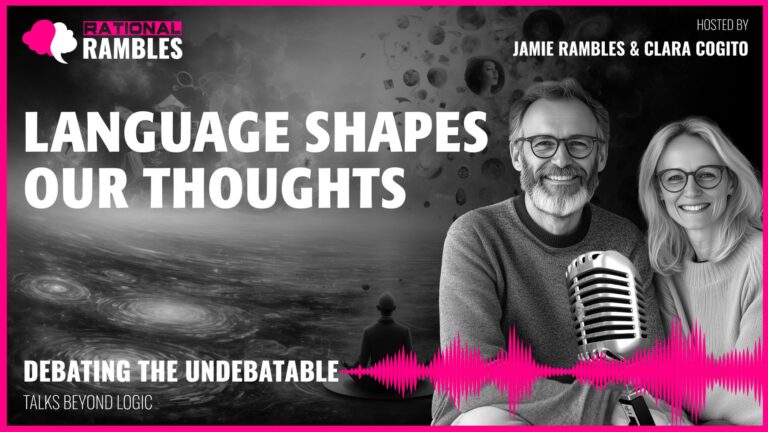The Empathy Virus Effect: Reimagining Society Through Enforced Emotional Feedback
Introduction: The Thought Experiment
Imagine a world transformed by a single biological event: a virus sweeps across the globe, but instead of causing physical illness, it creates an unprecedented neurological change. Everyone infected experiences, in real-time and at identical intensity, the emotional pain they inflict on others. This “empathy virus” effectively removes the psychological distance that typically allows humans to harm one another without fully processing the consequences of their actions. What would happen to our social structures, our moral frameworks, our very understanding of humanity if empathy were no longer optional but biologically enforced?
This thought experiment, while seemingly fantastical, provides a powerful lens through which to examine fundamental aspects of human behavior, social organization, and moral philosophy. By considering the far-reaching implications of such a scenario, we can gain insights into the psychological mechanisms that enable harmful behaviors and the potential for transformation when those mechanisms are disrupted. This exploration may ultimately reveal pathways toward a more empathic society even without such a virus—through intentional practices, education, and social structures that expand our capacity for compassion.
The Neuroscience of Empathy and Emotional Distance
To understand the revolutionary impact of an empathy virus, we must first examine the neurological basis of empathy and the psychological mechanisms that enable emotional distance in its absence. Research in neuroscience has identified specialized neural networks that form the biological foundation of our capacity to understand and share the feelings of others.
Mirror Neurons and Empathic Circuits
At the core of our empathic abilities are mirror neurons—specialized brain cells that fire both when we perform an action and when we observe someone else performing the same action. These remarkable neurons, first discovered in macaque monkeys and later identified in humans, provide a neural basis for understanding others’ intentions and emotions. Mirror neurons create an immediate, pre-reflective form of simulation that allows us to “feel” what others experience without conscious effort.
Research using functional magnetic resonance imaging (fMRI) has revealed that witnessing someone else in pain activates many of the same brain regions involved in processing our own pain, particularly the anterior cingulate cortex and anterior insula. However, these empathic responses are typically attenuated compared to direct experience—we feel a shadow of others’ suffering rather than its full intensity. The hypothetical empathy virus would effectively remove this attenuation, forcing individuals to experience others’ emotional pain with the same intensity as their direct experiences.
Psychological Distance and Moral Disengagement
Despite our innate capacity for empathy, humans have developed numerous psychological mechanisms that create emotional distance, particularly when causing harm to others. Psychologist Albert Bandura has detailed these processes of “moral disengagement,” which include dehumanization (viewing others as less than human), displacement of responsibility (“I was just following orders”), diffusion of responsibility (distributing blame across many actors), and distortion of consequences (minimizing or ignoring harmful outcomes).
These mechanisms have been documented in contexts ranging from wartime atrocities to corporate malfeasance. The bureaucratic structures of modern societies further enable what philosopher Hannah Arendt termed the “banality of evil”—the capacity for ordinary people to commit extraordinary harm when embedded in systems that create psychological and physical distance from the consequences of their actions.
An empathy virus would effectively short-circuit these mechanisms of moral disengagement by creating immediate, unavoidable emotional feedback. The drone operator would instantly feel the terror of civilians below; the corporate executive would experience the desperation of exploited workers; the online bully would suffer the same humiliation they inflict. This collapse of emotional distance would fundamentally alter the psychology of harmful behavior, making the consequences impossible to ignore or rationalize away.
Transforming Interpersonal Relations
The most immediate effects of the empathy virus would likely manifest in everyday interpersonal interactions, where the feedback between action and experienced consequence would be direct and unmistakable.
Family Dynamics and Intimate Relationships
Consider how family dynamics might transform when emotional consequences become immediately felt. Parents who habitually yell at their children would instantly experience the fear, shame, and confusion their behavior produces. This feedback would likely lead to rapid modifications in parenting approaches, favoring patience and explanation over intimidation. Similarly, partners in romantic relationships would directly feel the hurt caused by thoughtless words or selfish actions, creating powerful incentives for more considerate behavior.
Research on adverse childhood experiences (ACEs) has demonstrated the profound, lasting impact of emotional harm during development. Many parents unintentionally reproduce patterns of behavior they experienced in their own childhoods, often without fully recognizing their harmful effects. The empathy virus would break this intergenerational cycle by making these impacts impossible to ignore, potentially transforming family systems within a single generation.
The End of Bullying and Social Aggression
School environments, workplaces, and social media platforms would see perhaps the most dramatic transformations. Bullying—physical, verbal, or online—would become immediately self-punishing as perpetrators experienced the humiliation, fear, and pain they inflict. Research has demonstrated that many bullies have deficits in affective empathy (feeling what others feel) while maintaining cognitive empathy (understanding others’ emotions), which enables them to effectively target vulnerabilities without experiencing emotional consequences.
The empathy virus would eliminate this empathic disconnect. The playground bully pushing a smaller child would instantly feel the same fear and humiliation; the office worker spreading malicious gossip would experience the social anxiety and betrayal felt by their target; the internet troll would suffer the same distress their comments cause. This immediate feedback would likely lead to the rapid extinction of such behaviors, as the psychological rewards of dominance and control would be overwhelmed by directly experienced emotional costs.
The Complex Case of Necessary Pain
Not all pain infliction stems from malice or indifference. Some professions and relationships necessarily involve causing short-term emotional or physical distress for long-term benefit. Surgeons cause pain to heal; therapists sometimes provoke emotional discomfort to facilitate growth; parents set boundaries that may temporarily upset their children. How would the empathy virus affect these contexts of “necessary pain”?
The virus might distinguish between different types of emotional responses based on their complexity and context. When a surgeon operates, their patient experiences not only pain but also hope, relief, and gratitude for care. A comprehensive empathic response would include this full spectrum of emotion. Similarly, when a therapist challenges a patient’s destructive patterns, the immediate discomfort exists alongside feelings of being cared for and potential growth.
This distinction reflects the neurological separation between different aspects of empathy. Research has identified separate neural pathways for empathic distress (simply feeling bad when others feel bad) and compassionate empathy (including concern and a desire to help). Professionals who cause necessary pain might experience the complete emotional landscape of those they help, including the understanding of necessity and anticipation of future benefit.
Systemic and Structural Transformations
Beyond interpersonal interactions, the empathy virus would likely transform larger social systems and structures that currently enable harm through distance, diffusion of responsibility, and invisibility of consequences.
Economic Systems and Exploitation
Modern economic systems frequently externalize human costs, allowing decision-makers to avoid experiencing the consequences of their actions. Consider the factory owner who cuts safety measures to increase profits, or the executive who lays off thousands of workers to boost stock prices. These decisions are made possible partly because their emotional consequences remain abstract and distant.
The empathy virus would internalize these externalities directly into decision-makers’ experiences. The factory owner would feel the anxiety of workers in unsafe conditions; the executive would experience the desperation and shame of the unemployed. This would likely transform business practices, creating strong incentives for more humane working conditions, fair compensation, and considerate transitions when changes are necessary.
This transformation connects to what psychologists call the “identifiable victim effect”—our tendency to respond more strongly to specific, identifiable individuals than to statistical suffering. Research has shown that people are more moved by the story of a single child in need than by statistics about millions suffering. The empathy virus would overcome this limitation by making statistical suffering visceral and unavoidable, forcing decision-makers to feel the actual anxiety of specific individuals affected by their policies and practices.
Political Power and Governance
Political systems would face perhaps the most profound restructuring. Those in positions of power often make decisions that affect thousands or millions without experiencing the consequences. Research on the psychology of power has demonstrated that power literally changes how our brains work, diminishing empathy and increasing self-focus. The empathy virus would counteract these effects by creating direct emotional feedback between leaders and those they govern.
Politicians implementing harmful policies would experience the collective suffering they cause. Military leaders ordering attacks would feel the terror of civilians in war zones. This would create unprecedented accountability in governance, likely leading to more collaborative, consensus-based approaches rather than coercive or exploitative ones.
However, this raises questions about decision-making in genuinely difficult situations. Some leadership decisions inevitably cause some harm while preventing greater suffering. Would the empathy virus create decision paralysis in these contexts? Perhaps it would push societies toward more distributed decision-making systems, where difficult choices are made collectively so the emotional burden is shared, rather than concentrated in individual leaders who might become overwhelmed.
Justice Systems Reimagined
Criminal justice systems worldwide are largely built around concepts of retribution and punishment. The empathy virus would necessitate a fundamental rethinking of these approaches. If someone who commits a harmful act immediately experiences the suffering they cause, would additional punishment serve any purpose? The traditional justifications for punishment—deterrence, incapacitation, rehabilitation, and retribution—would all require reconsideration.
Deterrence would be built into the act itself through immediate emotional feedback. Retribution would become redundant when wrongdoers have already experienced their victims’ suffering firsthand. The focus might shift entirely to rehabilitation—helping people process their experienced empathy in productive ways and develop strategies to avoid causing harm in the future.
We might see the emergence of therapeutic systems designed specifically to help people integrate intense empathic experiences, rather than punitive systems designed to inflict additional suffering. This aligns with the restorative justice movement, which focuses on healing harm and rebuilding relationships rather than punishment. The empathy virus would make the philosophical premises of restorative justice neurologically inevitable.
Warfare, Violence, and Conflict
Perhaps no area of human activity would be more profoundly disrupted by the empathy virus than organized violence, particularly warfare and armed conflict. Throughout history, military training has specifically focused on overcoming natural empathic responses to enable killing and violence.
The End of Traditional Warfare
Military training typically involves systematic desensitization and dehumanization of the enemy. Soldiers learn to overcome their natural reluctance to harm others through repeated simulations and psychological conditioning. Research by military historian S.L.A. Marshall and later by Lieutenant Colonel Dave Grossman has documented the psychological resistance to killing and the methods used to overcome it.
With the empathy virus, these methods would become ineffective. Each act of violence would immediately rebound on the perpetrator. Soldiers would experience not only the physical pain of those they harm but also the terror, grief, and despair. Combat situations would become psychologically unsustainable, likely leading to widespread refusal to engage in violence. Traditional warfare might effectively cease within days of the virus’s spread.
The psychological toll would be particularly acute for those using remote weapons systems. Drone operators, artillery crews, and others who currently experience war at a distance would suddenly feel the full emotional impact of their actions, despite being physically removed from the consequences. This would eliminate the psychological buffer that technology has created in modern warfare.
Adaptation and New Forms of Conflict
Human adaptability suggests that new forms of conflict might emerge to replace traditional violence. We might see the development of fighting techniques designed to cause minimal emotional distress, or even the deliberate cultivation of emotional detachment through meditation or pharmacological means. Some might try to “game the system”—finding loopholes in how the virus transmits emotional pain.
More disturbingly, psychological warfare might take on new dimensions. If causing harm to others results in experiencing that harm oneself, might adversaries develop strategies to make opponents inflict self-harm, thus experiencing pain without direct action by the enemy? The game theory of conflict would become extraordinarily complex as actors sought advantage within the constraints of viral empathy.
Despite these potential adaptations, the overall level of violence would likely decrease dramatically. The immediate, unavoidable consequences would create powerful incentives for developing non-violent methods of conflict resolution. International diplomacy and mediation would take on new importance as the costs of violence became impossible to externalize or defer.
The Moral Injury Paradox
Research on combat veterans has documented the phenomenon of “moral injury”—psychological trauma resulting not from fear for one’s safety but from having violated core moral beliefs, particularly by killing or harming others. Many veterans suffer profound guilt and psychological distress from actions taken during combat, even when those actions were legally sanctioned and militarily necessary.
The empathy virus creates an interesting paradox in relation to moral injury. On one hand, it would make the emotional impact of harming others immediate and unavoidable, potentially increasing psychological trauma in the moment. On the other hand, it might actually reduce long-term moral injury by eliminating the gap between action and comprehension of consequences. The full understanding of harm would be integrated into the experience itself, rather than emerging later as delayed recognition and guilt.
Developmental Implications and Education
The empathy virus would interact in complex ways with human development and education, potentially transforming how children grow into moral agents and how empathy is cultivated across the lifespan.
Children’s Moral Development
Children naturally develop empathy gradually as their brains mature. Research in developmental psychology has documented this progression, from the contagious crying of infants (a precursor to empathy) to the sophisticated perspective-taking abilities of adolescents. Young children often lack the neural development necessary for full empathic understanding, which is why a five-year-old who pushes another child may not fully comprehend the pain they cause.
The empathy virus would likely affect children differently based on their developmental stage. Following the philosophical concept that moral responsibility requires both knowledge and agency, the virus might have an attenuated effect on children proportional to their level of moral awareness. This would align with how we typically view diminished responsibility in children.
Rather than being traumatic, this graduated experience might actually accelerate empathy development in healthy ways. Instead of learning the abstract lesson that “hitting hurts others,” children would have concrete experience to draw from. This experiential learning would likely be more effective than verbal instruction alone, potentially leading to more rapid moral development.
Educational Approaches and Empathy Cultivation
Schools and educational systems would need to adapt to this new reality, developing curricula designed to help children process and integrate their empathic experiences. Education might shift focus from abstract moral rules to guided reflection on direct empathic experiences—helping children understand the feelings they share with others and develop strategies for managing conflicts without causing harm.
This connects to existing approaches in social-emotional learning (SEL), which research has shown improves both behavioral outcomes and academic performance. The empathy virus would make SEL not just beneficial but essential, as children would need support in understanding and navigating their expanded emotional experiences.
Beyond childhood, we might see new educational approaches for adults as well. Therapeutic practices designed to help people process intense empathic experiences would become central to public health. Mindfulness practices, emotional regulation techniques, and conflict resolution skills would take on new importance as practical necessities rather than optional self-improvement.
The Paradox of Enforced Empathy
The developmental implications of the empathy virus raise a profound philosophical question: Is empathy that comes through biological enforcement rather than moral choice as valuable as freely chosen compassion? Philosophers like Immanuel Kant have argued that moral worth comes from acting rightly because it’s right, not from external compulsion.
However, developmental psychology suggests a more nuanced view. External constraints typically become internalized as children mature morally. Initially, children avoid harmful actions to avoid punishment; later, they internalize moral principles and act ethically because they believe it’s right. The empathy virus might function similarly—initially preventing harm through immediate feedback, but eventually scaffolding the development of genuine empathy and moral reasoning.
Rather than short-circuiting moral development, the virus might accelerate it by providing consistent emotional feedback that helps people integrate the consequences of their actions into their moral understanding. Over time, avoiding harm might shift from simple pain avoidance to a principled commitment to others’ wellbeing, grounded in a deep experiential understanding of shared humanity.
Cultural and Artistic Transformation
The empathy virus would likely transform cultural expression and artistic creation, as these domains both reflect and shape our emotional and moral experiences.
Reimagining Narrative and Entertainment
Much of our literature, film, and other narrative arts deal with violence, conflict, and the struggle to understand others’ perspectives. How might these forms change in a world where empathy is biologically enforced? We might see less glorification of violence and more exploration of the complexity of empathic experiences.
Stories might focus on the tension between necessary pain and harm, or explore the challenges of navigating a world where emotional consequences are immediate and unavoidable. Rather than simplistic hero/villain narratives, we might see more complex explorations of moral ambiguity and the ripple effects of actions through communities.
Entertainment that currently derives tension or excitement from violence and conflict would need to evolve. Perhaps we would see more emphasis on cooperative problem-solving, intellectual challenges, or the exploration of consciousness and perception. This might lead to entirely new genres and forms of expression designed for a more empathically connected audience.
Art as Collective Processing
Art might take on new importance as a way for society to collectively process the intense emotional experiences created by the empathy virus. Just as traumatic historical events often generate significant artistic responses, the unprecedented shift in human emotional experience would likely inspire new artistic movements and approaches.
We might see the development of art forms specifically designed to help integrate and understand complex empathic experiences—perhaps new forms of interactive theater or immersive installations that allow people to explore emotional perspectives safely. Art might become more explicitly therapeutic, helping people process and make meaning from their expanded emotional awareness.
New Language for New Experiences
Our current vocabulary for emotional states is largely premised on the separateness of experience. In a world of viral empathy, we might need new words and concepts to describe states of shared suffering or collective emotional processing.
This connects to linguistic research on how different cultures develop specific emotional concepts that others lack—like the Japanese “amae” (a feeling of sweet dependence on another person) or the Finnish “sisu” (extraordinary determination in the face of extreme adversity). These linguistic tools shape how people experience emotions, not just how they describe them.
A world transformed by the empathy virus would likely develop an entirely new emotional vocabulary to capture the nuances of shared experience. These linguistic innovations would further shape how people conceptualize and navigate their expanded emotional landscapes, potentially enabling more sophisticated forms of empathic understanding.
Evolutionary and Long-term Implications
If the empathy virus became a permanent feature of human biology, how might our species adapt over generations? The implications for human evolution—both biological and cultural—would be profound.
Rewiring Empathic Architecture
Our current emotional architecture evolved in environments where empathy had adaptive limitations. From an evolutionary perspective, it was beneficial to feel strong empathy for kin and in-group members, but limited empathy for outgroup members who might compete for resources. These evolutionary constraints have shaped the scope and intensity of human empathy.
The empathy virus would effectively override these evolved limitations, removing the emotional distance between self and other that has been adaptive throughout human history. This would create selection pressures for new psychological adaptations—perhaps greater emotional regulation capacity or enhanced ability to integrate complex emotional inputs without becoming overwhelmed.
Over generations, we might see changes in neural architecture related to empathy processing. The brain regions involved in distinguishing self from other might become more flexible, allowing for fluid boundaries between personal and shared emotional experience while maintaining functional autonomy of action.
Social Reorganization
With the constraints on empathy removed, we might see entirely new social structures emerging. Traditional boundaries between individuals and groups might become more permeable as the emotional impacts of inequality become immediately felt. Concepts like private property and exclusive resource control might evolve as their emotional consequences become impossible to ignore.
We might see movement toward more collective decision-making and resource allocation systems, as shared emotional experience creates stronger incentives for ensuring everyone’s wellbeing. The distinction between selfishness and altruism might blur as causing others harm becomes self-harming, and contributing to others’ wellbeing becomes directly rewarding through shared emotional experience.
These changes connect to existing research on the evolution of cooperation and altruism. Biologists and game theorists have long puzzled over how cooperation evolves when selfish behavior seems advantageous. The empathy virus would fundamentally alter this equation by creating immediate rather than delayed or diffuse costs for selfish actions.
The Empathy-Authenticity Feedback Loop
One of the most profound long-term implications might be the emergence of a culture of radical honesty and transparency. When deception and manipulation carry immediate painful consequences for the deceiver, we would likely see a strong selection pressure against these behaviors.
This connects to philosophical perspectives like that of Emmanuel Levinas, who described the “face of the Other” as creating an ethical demand that precedes conscious choice. The empathy virus would make this ethical demand neurologically unavoidable, creating powerful incentives for authentic interaction.
Beyond just reducing harm, this might enhance positive connections as people discover that authentic, supportive interaction feels rewarding to both parties simultaneously. Research in positive psychology has documented how acts of kindness and generosity often benefit the giver as much as the recipient. The empathy virus would amplify this effect tremendously, creating a powerful feedback loop encouraging prosocial behavior.
Philosophical Implications: More Human or Less?
The empathy virus thought experiment ultimately leads us to fundamental questions about human nature and moral development. Would a world of enforced empathy make us more human or less? Would it enhance or diminish our moral capacity?
The Question of Moral Worth
Philosophers like Immanuel Kant have argued that moral worth comes from acting rightly because it’s right, not from external compulsion. From this perspective, actions motivated by the desire to avoid the pain of the empathy virus might seem to have less moral value than freely chosen compassion.
However, this view may rest on an oversimplified understanding of moral development and motivation. The empathy virus wouldn’t eliminate choice so much as inform it more fully. People would still choose their actions, but with complete awareness of their consequences—perhaps the truest form of informed consent possible.
Moreover, developmental psychology suggests that external constraints eventually become internalized as moral principles. Initially, people might avoid harmful actions simply to avoid painful feedback. But over time, this could scaffold the development of genuine empathy and moral reasoning, as people integrate their experiences into coherent moral frameworks.
The Nature of Humanity
Does the capacity to ignore others’ suffering make us human, or does it represent a limitation to be overcome? Our capacity for empathy is already biologically rooted—the virus would simply remove the psychological defense mechanisms that let us avoid it.
Throughout human development, both individual and cultural, we see that moral growth often involves developing greater capacity to consider others’ perspectives and feelings. From this developmental perspective, the empathy virus would accelerate a process already central to human moral evolution, perhaps allowing us to achieve levels of collective harmony that our current emotional architecture makes difficult.
There’s something profoundly worthy in a world where causing harm becomes physically difficult, while creating joy becomes self-reinforcing. Rather than diminishing humanity, this might represent its fullest expression—allowing us to live more fully in accordance with our social nature and capacity for care.
From Thought Experiment to Reality
While the empathy virus remains fictional, this thought experiment reveals something important about our current reality. Many of our social problems persist precisely because the emotional consequences of our actions are delayed, diffused, or hidden from us.
Perhaps we don’t need an actual empathy virus. By deliberately cultivating greater awareness of how our choices affect others—through education, storytelling, and direct experience—we might achieve some of the benefits this hypothetical virus would bring, while preserving the moral growth that comes through choosing empathy freely.
In many ways, the humanities, arts, and social sciences are already attempting to create a kind of “empathy virus” through cultural means rather than biological ones. Literature lets us experience lives unlike our own, history teaches us the consequences of moral failures, and philosophy challenges us to consider our ethical responsibilities to others.
The most valuable insight from this thought experiment may be recognizing the importance of these existing pathways to empathy. While our capacity for empathy has evolved biological limitations, those limitations aren’t fixed. Through intentional practices, education, and social structures that reward compassion rather than exploitation, we can expand our empathic circles—moving toward the kind of world that the empathy virus would create, through conscious choice rather than biological enforcement.
Conclusion: The Double-Edged Sword of Enforced Empathy
The empathy virus thought experiment illuminates both the profound challenges created by our current emotional architecture and the transformative potential of overcoming these limitations. By forcing us to experience the emotional consequences of our actions in real-time, such a virus would collapse the psychological distance that enables much human suffering.
From interpersonal relationships to global power structures, from justice systems to warfare, from childhood development to artistic expression—no aspect of human experience would remain unchanged. The immediate feedback between action and consequence would create powerful incentives for compassion, consideration, and care, while making exploitation, violence, and indifference extraordinarily difficult to sustain.
Yet the most valuable insight may be what this thought experiment reveals about our current reality. The emotional distance that enables harm isn’t an immutable aspect of human nature but a psychological limitation that can be addressed through intention and practice. By cultivating empathy through education, direct experience, and social structures that reward compassion, we can move toward many of the benefits the empathy virus would bring, while preserving the moral growth that comes through choosing connection rather than having it biologically enforced.
Perhaps the true purpose of this thought experiment is not to imagine an external solution to human suffering, but to remind us of our existing capacity for connection—and to inspire us to develop this capacity more fully, both individually and collectively. In this way, the fictional empathy virus becomes a mirror, reflecting both our current limitations and our remarkable potential for growth toward a more empathic future.
Sources and Further Reading
Baron-Cohen, S. (2011). The Science of Evil: On Empathy and the Origins of Cruelty. Basic Books.
Batson, C. D. (2009). These things called empathy: Eight related but distinct phenomena. In J. Decety & W. Ickes (Eds.), The Social Neuroscience of Empathy (pp. 3-15). MIT Press.
Bloom, P. (2016). Against Empathy: The Case for Rational Compassion. Ecco.
Decety, J., & Jackson, P. L. (2004). The functional architecture of human empathy. Behavioral and Cognitive Neuroscience Reviews, 3(2), 71-100.
Grossman, D. (2009). On Killing: The Psychological Cost of Learning to Kill in War and Society. Back Bay Books.
Keltner, D. (2016). The Power Paradox: How We Gain and Lose Influence. Penguin Books.
Rifkin, J. (2009). The Empathic Civilization: The Race to Global Consciousness in a World in Crisis. Tarcher.
Singer, T., & Klimecki, O. M. (2014). Empathy and compassion. Current Biology, 24(18), R875-R878.
Zaki, J. (2019). The War for Kindness: Building Empathy in a Fractured World. Crown.


